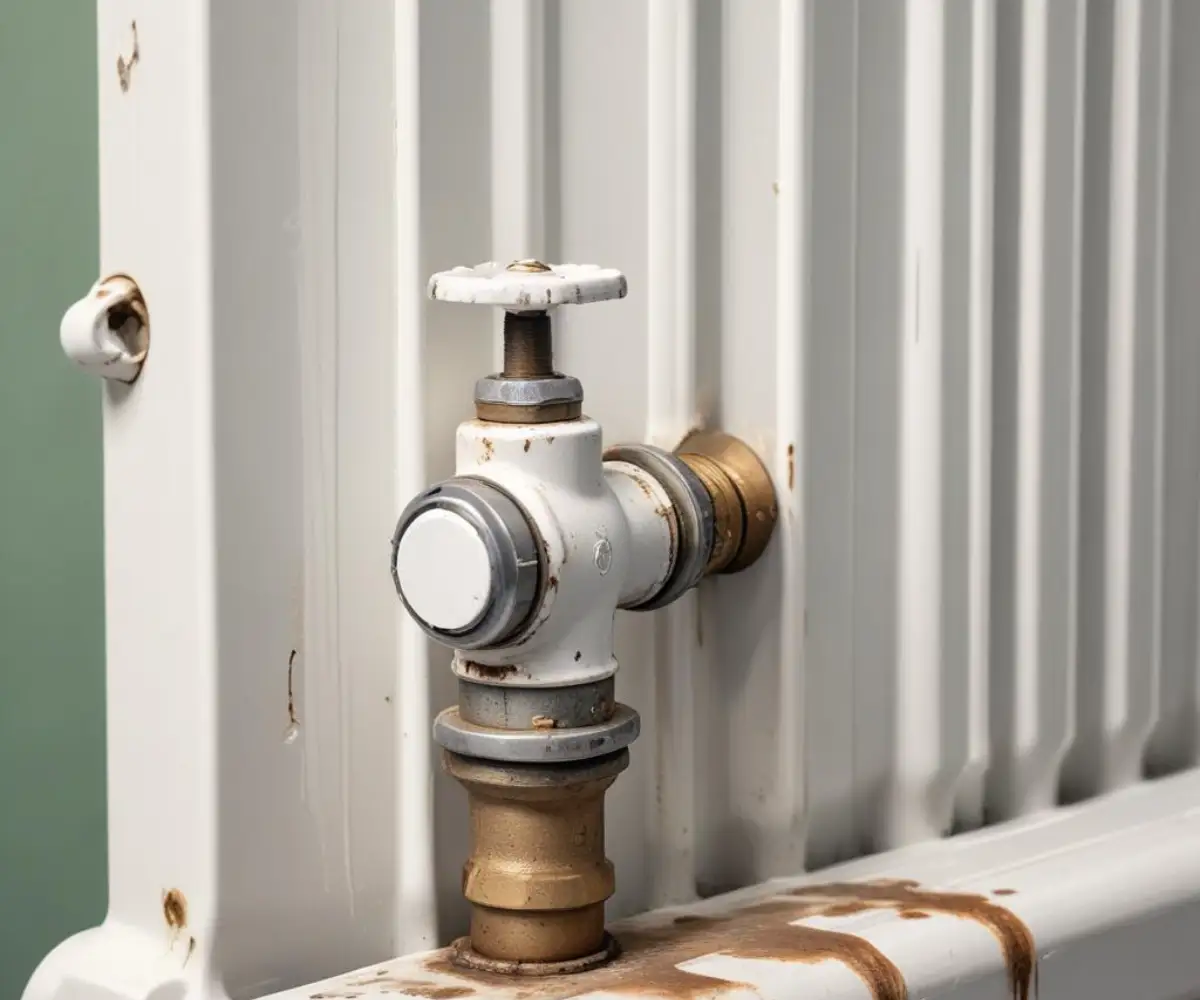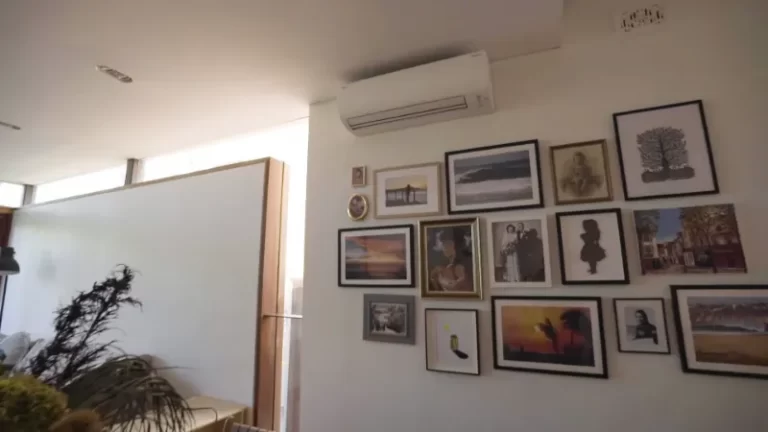Radiator Knob Won’t Turn? Here’s Your 5-Minute Fix
That familiar chill in the air signals winter’s approach, and the first thing many of us do is reach for the radiator knob to bring warmth back into our homes. But what happens when you’re met with stiff, unmovable resistance? A radiator knob that won’t turn is a surprisingly common and incredibly frustrating problem, often leaving you stuck in the cold.
The good news is that this issue is rarely a sign of a major heating system failure. In most cases, it’s a simple mechanical problem that you can fix yourself with a few basic tools and a little bit of know-how. This guide will walk you through everything you need to know to diagnose the problem, fix it safely, and get your radiator working perfectly again.
You'll Learn About
Why Is Your Radiator Knob Stuck? Uncovering the Common Culprits
Before you can fix the problem, it helps to understand what’s causing it. A radiator valve is a relatively simple device, but a few key issues can cause it to seize up. Understanding the “why” will make the “how” much easier to tackle.
The Most Common Issue: A Seized TRV Pin
The most frequent cause of a stuck radiator knob, especially after the long summer months, is a seized pin inside the Thermostatic Radiator Valve (TRV). The TRV is the valve with numbers on it, designed to regulate room temperature automatically. Inside the valve is a small metal pin that moves up and down to control the flow of hot water into the radiator.
During summer, when the heating is off, this pin can remain pressed down in the “closed” position for months on end. This inactivity can cause the pin to get stuck, preventing the valve from opening when you turn the knob. This is the primary reason why a radiator remains cold even when others in the house are heating up.
The Silent Seizure: Limescale and Corrosion
Over time, the inside of your heating system can accumulate mineral deposits (limescale) and rust. This debris can build up within the narrow passages of the radiator valve, effectively gluing the internal components together. This is a more common problem in areas with hard water.
This internal buildup can make the valve extremely stiff or completely impossible to turn by hand. While a little extra force might be tempting, it can lead to bigger problems. Applying too much pressure can damage the valve’s internal mechanism or even cause a leak.
Accidental Damage: Over-Tightening and Wear
Sometimes, the problem is simple human error. Over-tightening a radiator valve can jam the mechanism, making it difficult to turn back in the other direction. This can happen if you’ve tried to force a valve shut to stop a minor drip or simply used too much strength in the past.
Like any mechanical part, radiator valves also suffer from wear and tear over time. The internal seals can degrade, and the mechanism can become worn, leading to stiffness and eventual seizure. If your valves are very old, they may simply have reached the end of their functional life.
Your Step-by-Step Guide to Fixing a Stuck Radiator Knob
Now that you know the likely causes, it’s time to get hands-on. Most stuck valves can be freed with some gentle persuasion. Follow these steps carefully to resolve the issue safely and efficiently.
Before You Begin: Safety and Preparation
Safety should always be your first priority. Before attempting any repairs, it’s a good idea to turn off your central heating system and allow the radiators to cool down completely to avoid any risk of burns. Gather a few simple tools to make the job easier.
You will likely need an adjustable spanner, a pair of pliers or grips, a small hammer, a can of penetrating lubricant (like WD-40), and a cloth to protect the valve’s surface. Having these ready will save you time and trips to the garage.
Solution 1: Releasing a Stuck TRV Pin
This is the fix for the most common radiator problem. If your TRV knob turns but the radiator doesn’t heat up, or if the knob itself is stuck, the pin is the first thing to check. Start by setting the TRV to its highest setting (usually ‘5’) to fully retract the mechanism inside the head.
Next, unscrew the large ring at the base of the plastic TRV head. You should be able to do this by hand by turning it anti-clockwise. Once loose, you can lift the entire head off, which will expose the valve body and the small metal pin at its center.

If the pin is stuck, it will be pressed down into the valve body. Gently tap the side of the valve body with the handle of your screwdriver or a small hammer a few times. This vibration is often enough to free the stuck pin. You can then use the pliers to gently grip the pin and wiggle it up and down until it moves freely. Be very careful not to pull the pin all the way out.
Once the pin springs back up on its own, apply a small spray of WD-40 to lubricate it. Push it down and let it spring back up a few times to ensure it’s moving smoothly. Finally, screw the TRV head back on, turn on your heating, and your radiator should spring back to life.
Solution 2: Applying Controlled Force for Stiff Knobs
If the knob itself is what’s stuck, a little extra leverage may be all that’s needed. Do not use brute force, as this can easily break the plastic knob or the valve itself. Instead, use a controlled and steady approach.
Wrap a cloth around the valve knob to protect it from scratches. Then, grip the cloth-covered knob firmly with your adjustable spanner or pliers. Apply slow, steady pressure in the anti-clockwise direction to open the valve (‘lefty-loosey’). The additional leverage from the tool is often enough to overcome the internal resistance from limescale or inactivity.
Solution 3: Dealing with Lockshield Valves
On the other side of your radiator is the lockshield valve, which is used to ‘balance’ the heating system and typically covered by a plastic cap. These can also seize up. To free a stuck lockshield valve, first, pry off the protective plastic cap.
Underneath, you’ll see a brass spindle. Use an adjustable spanner to grip this spindle and gently turn it anti-clockwise. As with the main knob, use steady pressure rather than sudden force to avoid causing damage.
When Brute Force Isn’t the Answer: Knowing Your Limits
While most stuck radiator knobs are a straightforward DIY fix, there are times when you should step back and call a professional. Applying excessive force is dangerous as it can break the valve or the pipe, leading to a serious leak and potential water damage. A major leak could compromise structural materials, including things like the asphalt-impregnated board sometimes used in flooring and walls.
If you see any signs of a leak around the valve, notice visible cracks in the valve body, or if the knob still won’t turn after trying these gentle methods, it’s time to call a qualified plumber. They have the expertise and specialized tools to replace the valve safely without draining your entire heating system.
Preventive Maintenance: Stop It From Happening Again
An ounce of prevention is worth a pound of cure, and this is especially true for radiator valves. A few simple habits can prevent your radiator knobs from seizing up in the first place, ensuring your heating system is ready to go when you need it most.
The single most effective preventive measure is to operate your radiator valves regularly. During the summer months, when the heating is off, make a point to turn each radiator valve from fully open to fully closed and back again a few times. This simple action keeps the internal pin and mechanism moving, preventing them from seizing due to inactivity.
| Maintenance Task | Frequency | Purpose |
|---|---|---|
| Turn Valves On and Off | Once a month during summer | Prevents the internal TRV pin and valve mechanism from seizing. |
| Check for Leaks | Annually (before winter) | Catches small drips from the valve glands before they cause corrosion or damage. |
| Bleed Radiators | Annually (before winter) | Removes trapped air, ensuring the radiator heats efficiently and reduces internal corrosion. |
| Professional System Check | Annually | Ensures the entire heating system, including valves, is in good working order. |
Understanding Your Radiator’s Anatomy
Empowering yourself with a basic understanding of your heating system can make troubleshooting much easier. Your radiator has two key valves: the Thermostatic Radiator Valve (TRV) and the Lockshield Valve. The TRV is the one you adjust for temperature, while the Lockshield is set by a plumber to balance the system and usually shouldn’t be adjusted.
These valves control water flow, which is a critical part of many home systems. Just as a radiator valve can get blocked by sludge, other plumbing components need to be kept clear to function, from the essential washing machine check valve that prevents dirty water backflow to the robust drive-over drain pipe in your driveway that needs to handle both weight and water.
Frequently Asked Questions (FAQ)
Many homeowners have similar questions when faced with a stubborn radiator knob. Here are answers to some of the most common queries to help you navigate the issue with confidence.
Can I use WD-40 on a radiator knob?
Yes, you can. A penetrating lubricant like WD-40 is excellent for helping to free a stuck TRV pin. After removing the thermostatic head, a small spray directly onto the exposed pin can help dissolve rust and loosen grime, making it easier to free up.
What’s the difference between turning the knob to ‘0’ and turning it off completely?
Turning the knob to ‘0’ or the frost symbol (*) closes the valve but keeps it in a standby mode. It will still allow a small amount of hot water to flow if the room temperature drops near freezing to prevent pipes from bursting. Turning off the lockshield valve on the other side completely isolates the radiator from the system.
How much does it cost to replace a radiator valve?
If you need to call a professional, the cost can vary. The price for a plumber to supply and fit a new TRV typically ranges from £80 to £150, depending on your location and the complexity of the job. The valve itself is relatively inexpensive, with most of the cost being for the plumber’s labor.
My radiator is hot even when the knob is turned off. Why?
This usually indicates that the internal pin or washer inside the valve has failed and is stuck in the open position. Even though you turn the knob, the valve isn’t closing internally. In this situation, the TRV head or the entire valve assembly will likely need to be replaced.
Take Control of Your Home’s Comfort
A radiator knob that won’t turn can be a real nuisance, but it’s rarely a cause for panic. By following the simple, logical steps outlined in this guide, you can diagnose the root cause and, in most cases, fix it yourself in just a few minutes. Remember to work gently and prioritize safety by letting the system cool down first.
Regular maintenance is the key to a reliable heating system. By taking a few minutes each summer to exercise your radiator valves, you can prevent them from seizing and ensure a warm, comfortable home when winter arrives. With this knowledge, you are now better equipped to handle this common household problem and take confident control of your home’s heating.


